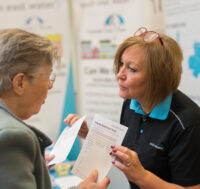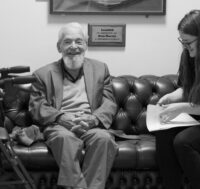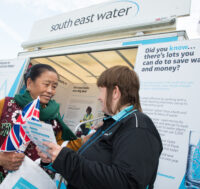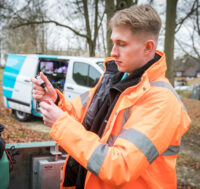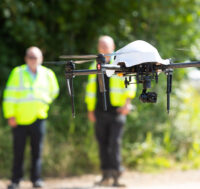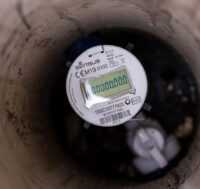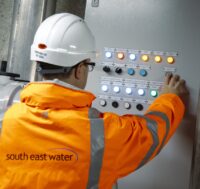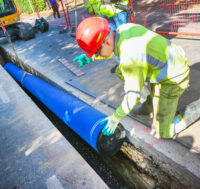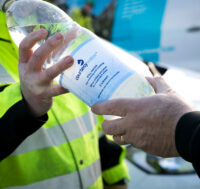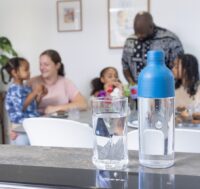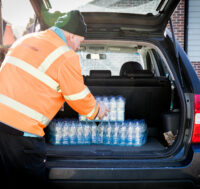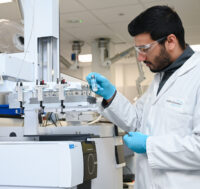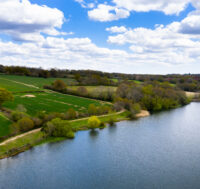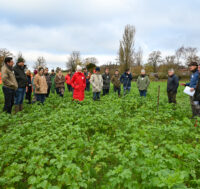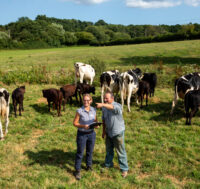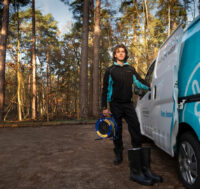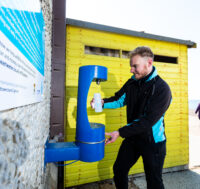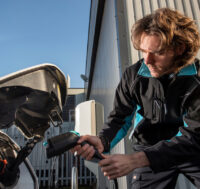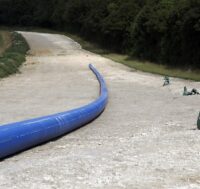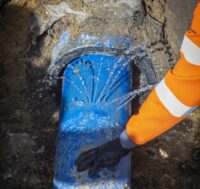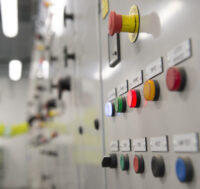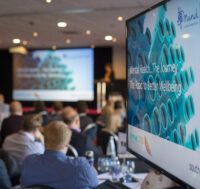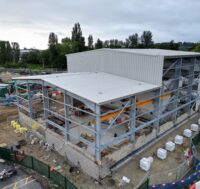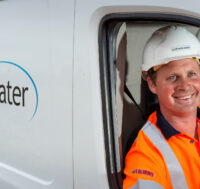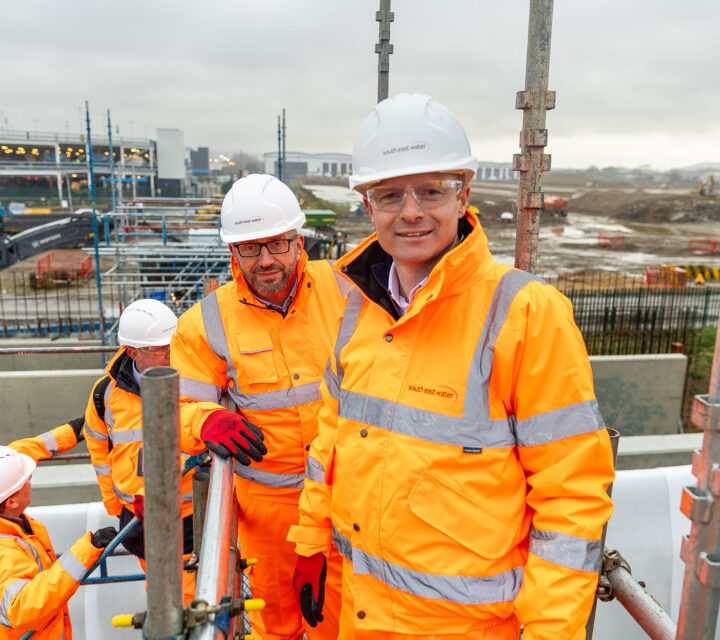Our responsible business commitment to publish our renewable energy measures
What is this commitment?
We will publish a range of supplementary metrics that highlight the percentage mix of our energy sources and also include information on our energy efficiency and the impact of our land acting as a “carbon sink”.
This contributes to the WaterUK Public Interest Commitment to achieve net zero carbon emissions for the sector by 2030.
Desired impact – For South East Water to ensure we are transparently reporting on our progress towards Net Zero carbon ambition for 2030.
How have we performed?
Our business plan for 2020 to 2025 includes a target to reduce our operational emissions by 80 per cent by 2025 (when compared to 2017/18).
We are also aiming to achieve a 98 per cent reduction in our operational direct carbon emissions by 2030 (when compared with 2018/19).
We published a net-zero route map in July 2021 which outlines our strategy to both secure our 2025 commitments and our 2030 operational net zero target. Details of the route map can be found on our website here.
Our strategic direction statement also includes a net zero commitment by 2050 in respect of all our operational emissions including embedded emissions. We will work with our supply chain to deliver this objective.
Reducing our energy use
Most of our emissions come from the electricity we use to treat and pump water (71 per cent of all our emissions in 2023/24).
We continually review how we can minimise our carbon emissions, which includes in-depth energy management reviews, extended metering, and our capital maintenance programme of replacing older assets such as pumps with newer more efficient pumps which will reduce our energy consumption and carbon emissions.
We have developed analytics and reporting surrounding energy per mega litre produced at our major operational sites, which allow us to optimise energy use and identify sites that are less efficient based on energy trends and would benefit from a revised process or improved assets.
Increasing our use of renewable energy
Our original objective for the 2020 to 2025 period was to reduce our emission from our grid electricity using REGO (Renewable Energy Guarantee of Origin) arrangements. This was an intermediate step before securing direct sources of renewable energy.
In 2021/22 we had REGO arrangements in place, which resulted in a reduction of our greenhouse gas emissions. However, the volatile energy market has led to REGO price increases of greater that 1,000 per cent, and in combination with significant wholesale energy increases we have decided this no longer provides good value for our customers, and to focus instead on securing direct green power purchase agreements. This explains that since 2022/23 our emissions have increased because they reflect the standard mix of energy from the grid that we buy from our electricity supplier.
However, our main goal is to secure long term renewable energy supply to cover all our electricity requirements by entering into power purchase agreements. Entering into a long-term power purchase agreement (PPA) will directly contribute to the development of new renewable energy capacity and enable further decarbonisation at a UK level.
We have designed projects for solar generation on up to 20 of our own sites and adjacent land across our supply area and we are working with partners to develop some or all of these projects. Where appropriate we are also assessing combining onsite battery storage alongside solar. In addition to extending solar energy beyond the confines of daylight hours, battery storage will also add resilience to grid outage and mitigate the use of diesel generators.
Electric vehicles
We are continuing to work with vehicle manufacturers to source and trial the latest electric vehicle (EV) technologies while also testing home charging options for our operational fleet vehicles. Due to the 24/7 nature of our business, we are working with the fleet and water industries to identify the best solutions for our operating environment. This means tackling issues around electric charging for our van drivers who take vehicles home. Some drivers may not have access to charging points and we cannot provide a responsive service if a vehicle is on charge when it’s required. There are also tariff and billing mechanisms to resolve. At the moment EVs cost more, larger vans can carry around half the usual payload (equipment) and have limited range. We know there is a careful balance to be achieved between the environmental necessity and the operational practicalities of being able to provide a responsive service 24/7. We also know that technology is moving fast and therefore momentum is gathering pace to find the best solutions to these industry-wide issues.
We are part of fleet forums for our industry looking into the EV issues, sharing insight, ideas and best practice. The issues we face are not unique to our company and our contractors have the same dilemma. While we recognise that 12 per cent of our company’s carbon comes from our transport fleet, less than half comes from our company-owned vehicles. This is why we are also working with our contractors to ensure they share our decarbonisation ambitions and are fully aligned with our approach.
Four per cent of our 400-strong fleet is currently electric and we plan to accelerate our phased investment in this area as the above issues are resolved.
We’ve updated our Car Policy this year. Although our business doesn’t have many company cars, the new policy means the ones we do have will need to be ultra-low emission vehicles. In October we introduced a company-wide Electric Vehicle (EV) salary sacrifice scheme, enabling staff to lease an electric vehicle at a significantly reduced cost. The scheme has been designed to encourage colleagues to switch to an EV, reducing the carbon footprint of the journeys they make for work while supporting our environmental ambitions. Staff placed orders for 11 new vehicles in the first month of the new scheme. After a positive start to the scheme, the Financial Conduct Authority (FCA) has temporarily suspended all company EV salary sacrifice schemes while they resolve some outstanding issues over ‘gap insurance.’ We await the FCA’s advice with interest as we seek to promote this scheme further.
We now have 13 company locations with a total of 36 EV charging sockets. At our Bray Keleher WTW, we’ve increased the number of EV charging points from one to two (providing four sockets), and at our Snodland offices, we’re planning to increase the number of charging points over the next year. We are programming in a power capacity upgrade to cope with the additional charging points.
Business plan for 2025-30
In our next business plan for 2025-30, we are focusing on reducing our direct emissions from running our treatment works by upgrading our ozone plants to reduce process emissions and decarbonising our fleet of commercial vehicles. We are proposing to:
- Replace 70 per cent of our fleet with low-carbon alternatives.
- Implement liquid oxygen ozonation at the Barcombe and Arlington water treatment works to lower our operational carbon emissions.
- Initiate pilot projects to switch our backup electricity generators from diesel to alternatives like battery, hybrid (diesel/electric), or hydrotreated vegetable oil (HVO) generators.
Tree planting – carbon offsetting
With colleagues and communities, we planted 12,637 trees during the year. This is 56 per cent higher than our annual target. Others have been planted through our partnership with Trees for the Downs (South Downs National Park Trust) which restores community trees lost to pests and diseases.



